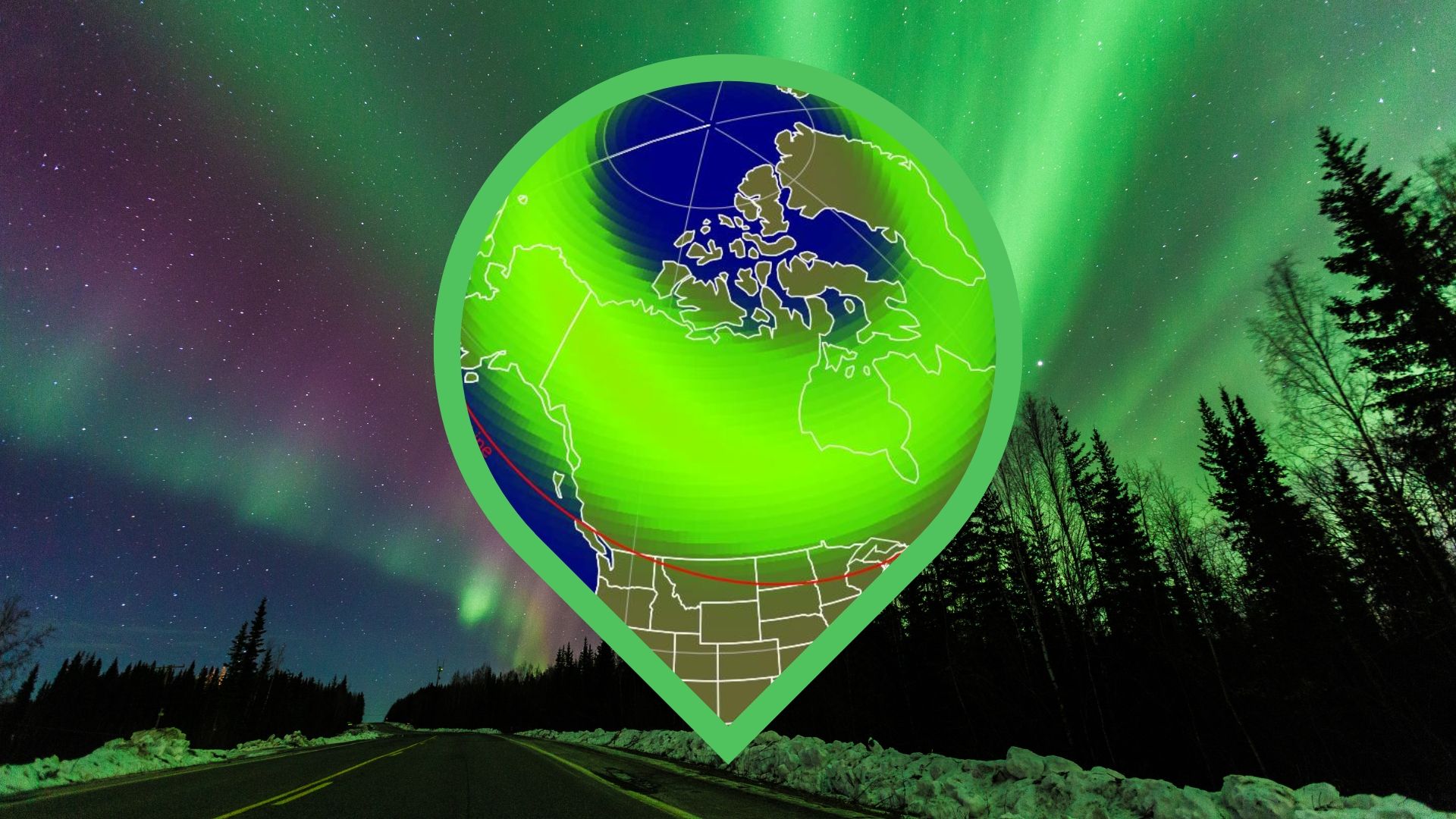
Skywatchers in parts of the northern U.S. may be treated to another display of northern lights tonight (Oct. 1) as geomagnetic storm conditions continue to buffet Earth’s magnetic field.
NOAA’s Space Weather Prediction Center has issued a G2 (moderate) geomagnetic storm watch for Oct. 1. NOAA warns that geomagnetic storm conditions are likely to persist through the evening due to the lingering effects of a high-speed solar wind stream currently blasting Earth at 700 to 800 kilometers per second.
That means the aurora could once again dip farther south than usual, offering a glimpse of the northern lights for skywatchers in several northern-tier U.S. states — weather and light pollution permitting.
When and where can you see the northern lights?
According to NOAA’s Kp index forecast, geomagnetic storming is expected to peak between 5 p.m. and 8 p.m. EDT (2100 to 0000 UTC), with the Kp index estimated to reach 5.67 — firmly within G2 levels.
Given the continued disturbance in Earth’s magnetic field and the strong solar wind, there’s even a possibility for G3 (strong) conditions, especially if the magnetic field continues to tilt southward.
Based on the latest NOAA aurora forecast map, the following seven U.S. states appear fully or partially above the aurora view line:
States that could see the northern lights tonight
Alaska
Oregon
Idaho
Montana
North Dakota
Minnesota
Wisconsin
If G2 (Moderate) geomagnetic storm levels are reached, auroras could expand farther south than currently forecasted, potentially becoming visible in parts of Michigan, New York, northern Illinois and other mid-latitude states — especially in areas under clear, dark skies.
Auroras are highly unpredictable, so even if you’re within the view line, you’ll still need cloud-free skies, minimal light pollution, a clear view northward and a bit of luck to catch the display.
Northern Hemisphere aurora forecast courtesy of the Met Office
How to see the northern lights where you live
If you’re in one of the seven U.S. states listed above, here are some tips for catching the display:
Head to a dark location far from city lights.
Find a north-facing view with a clear horizon.
Look up around midnight to 2 a.m. local time, but keep watch as soon as skies darken.
Be patient. Auroras often come in waves and can appear faint at first.
We recommend downloading a space weather app that provides aurora forecasts based on your location. One option I use is “My Aurora Forecast & Alerts,” available for both iOS and Android. However, any similar app should work well. I also use the “Space Weather Live” app, which is available on iOS and Android, to get a deeper understanding of whether the current space weather conditions are favorable for aurora sightings.
What’s causing the aurora activity?
This ongoing geomagnetic storm is the result of a fast solar wind streaming from a coronal hole — an opening in the sun’s magnetic field that allows high-speed particles to escape. This high-speed stream has been interacting with Earth’s magnetic field since late Sept. 30, triggering storm levels ranging from G1 to G3.
In its Oct. 1 update, NOAA reported the solar wind environment remains highly disturbed with sustained southward magnetic fields — the key ingredient for driving auroral activity.
According to the U.K. Met Office, auroras may be visible tonight from northern Scotland and New Zealand’s South Island, though visibility may diminish as the week progresses.
What is a G2 geomagnetic storm?



